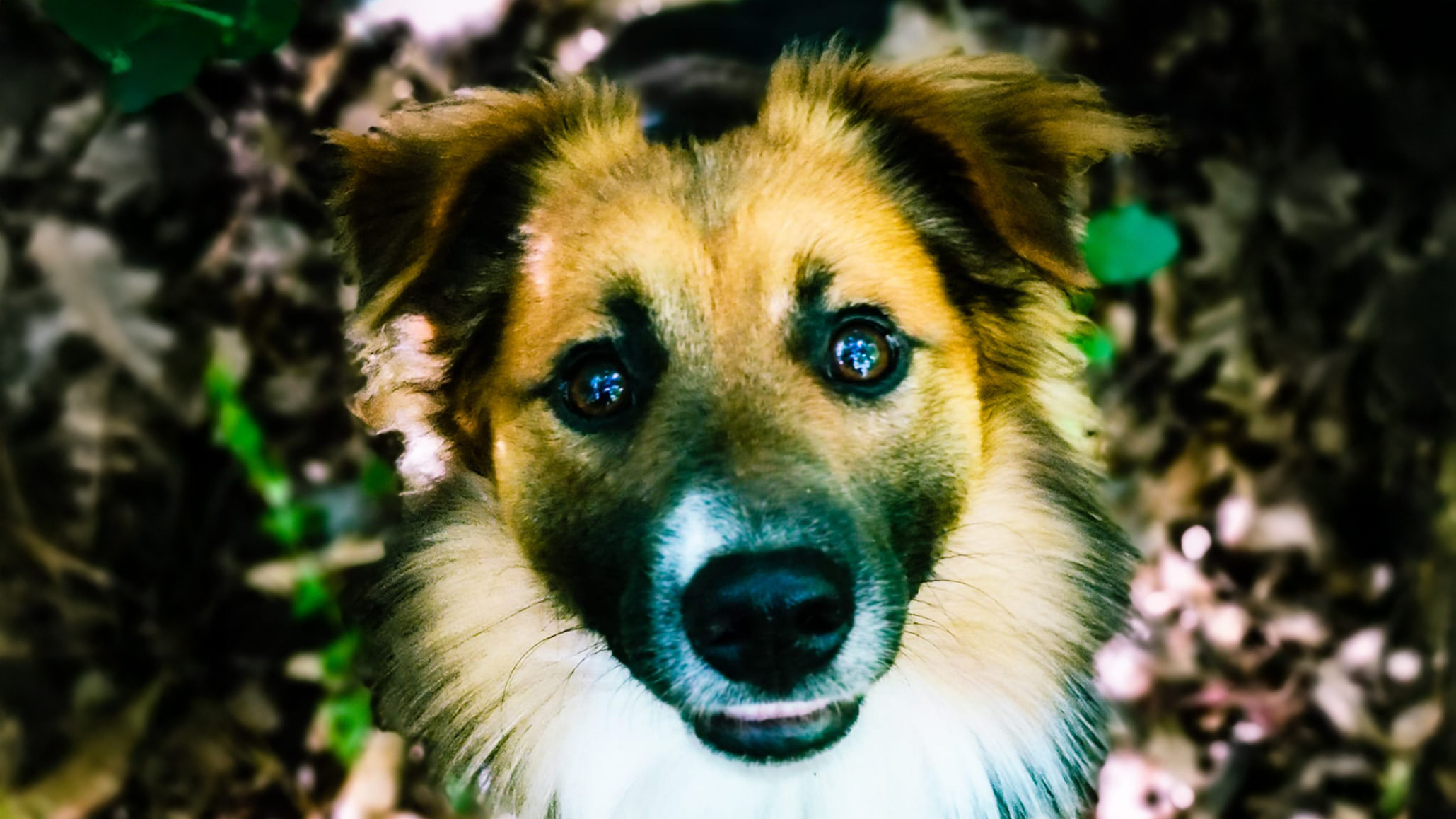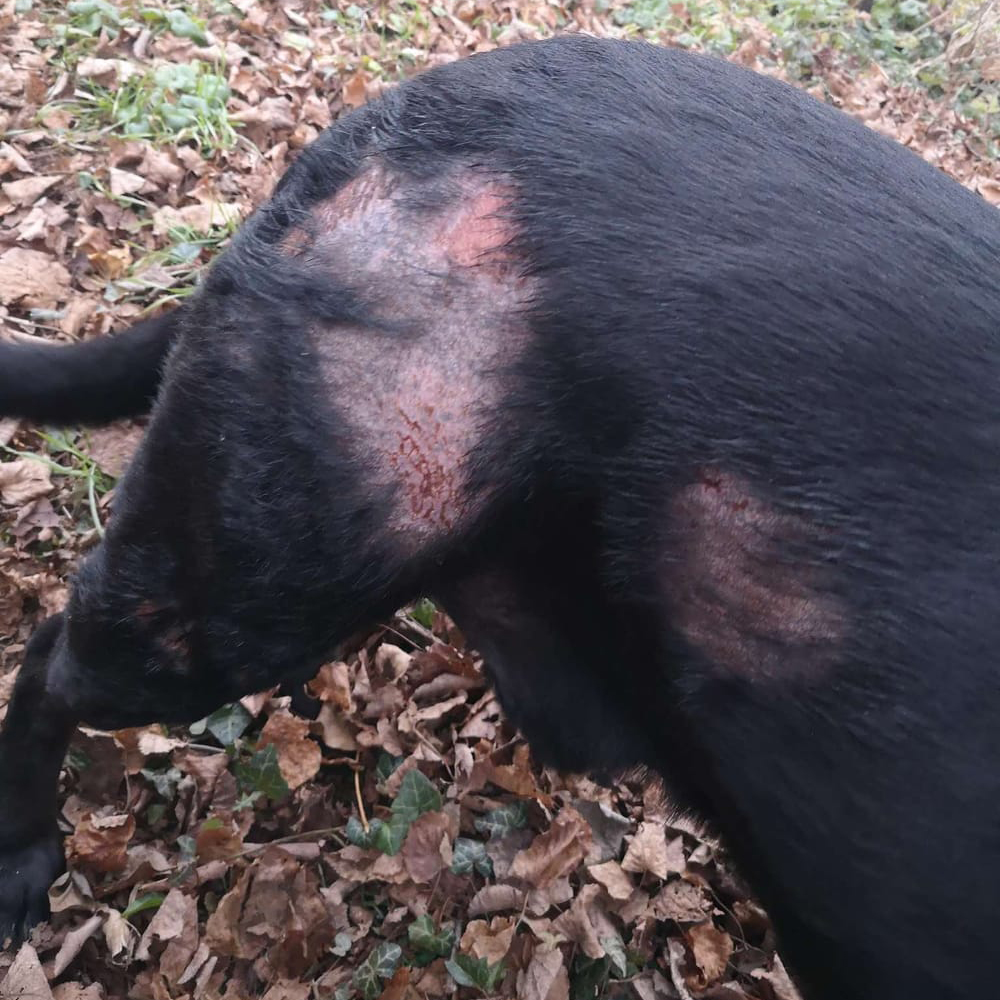Awareness of the specific dangers autumn brings to your dog’s health is essential for preventing illnesses and injuries. To keep your dog as healthy and happy as possible throughout the fall season, it’s important to regularly schedule veterinary check-ups, use preventive measures against parasites, and provide proper nutrition. By closely monitoring your dog’s health and behavior, you’ll be able to act quickly if any problems arise. This way, you can ensure worry-free autumn moments with your beloved pet.
-
Dr. Timi
- 1. December, 2024
Dogs in Autumn: Challenges and How to Prevent Them

Parasitic Infections, Such as Fleas and Ticks

The most common external parasites affecting dogs are fleas and ticks. In autumn, their numbers often increase, even though they are present year-round. Humidity and falling leaves create optimal conditions for their reproduction. Fleas can cause severe itching, allergic reactions, and dermatitis. On the other hand, ticks are known carriers of serious diseases such as Lyme disease, anaplasmosis, and ehrlichiosis. Let’s not forget about mange, which is especially a risk for rural dogs and hunting dogs due to contact with infected foxes.
Symptoms of flea infestation:
Excessive scratching, licking, and rashes can sometimes lead to redness and even hair loss. Fleas may be detected in the dog’s fur as small, fast-moving dark specks. In puppies or small dog breeds, severe infestations can also result in anemia.
Symptoms of tick infestation:
Ticks are commonly found on a dog’s skin, particularly on the head, ears, neck, and paws. Symptoms of infections transmitted by ticks include fever, fatigue, loss of appetite, as well as joint pain and swelling.
Prevention:
To protect against these parasites, preventive measures are essential. Options include anti-tick and anti-flea collars, spot-on treatments, and oral tablets. Additionally, it’s advisable to regularly check your dog, especially after outdoor walks, and promptly remove any ticks you find. Keeping the environment clean is also important, as fleas often reside near areas where dogs spend the most time.
Seasonal allergies
In the autumn period, dogs are often exposed to various allergens, such as tree and weed pollen, as well as the presence of mold and fungi, which become more prevalent during this time. Seasonal allergies in dogs can manifest in various ways, primarily as skin problems.
Symptoms of seasonal allergies:
Signs of an allergic reaction include itching, redness of the skin, and rashes, and it can affect the ears, eyes, nose, and digestive system.
Prevention
To reduce exposure to allergens, regularly clean your home. Pay special attention to areas where your dog spends time. Using gentle, hypoallergenic shampoos when bathing your dog can help remove allergens from its fur and skin. It is advisable to consult with a veterinarian about the possibility of using antihistamines or other medications that could alleviate the symptoms.
Cold and respiratory infections
As the temperature drops, dogs become more susceptible to colds and other respiratory infections, such as infectious tracheobronchitis, more commonly known as kennel cough. It is one of the most common upper respiratory tract infections in dogs. It is transmitted through the air, saliva, and secretions of infected dogs, so it most commonly spreads where there are large numbers of dogs, such as in shelters, dog schools, or dog parks.
The disease is particularly dangerous for puppies, who are more susceptible to complications due to their still developing immune system. Older dogs, pregnant females, and those with pre-existing respiratory issues are also more at risk, as they have a weaker immune response.
Symptoms of respiratory infections:
Symptoms include a strong cough, sneezing, nasal and eye discharge, and a feeling of tiredness. In some cases, loss of appetite and a slight increase in body temperature may also occur.
Prevention
If outbreaks of infection are known in the area, limit contact with other dogs. Regular vaccination against kennel cough significantly reduces the likelihood of infection. If infection does occur, it will be much milder. Make sure your dog drinks water and provides rest in a warm, dry environment, especially after being outside in low temperatures.
Poisoning from plants and mushrooms
In the autumn, various types of mushrooms appear in nature that can pose a danger to dogs, as many of them are poisonous. Along with mushrooms, other autumn fruits, such as grapes during harvest time, can also present a risk of poisoning. Although it is not fully understood which dogs are sensitive to grapes and which are not, it is still better to avoid them rather than risk potential poisoning.
Symptoms of poisoning:
General symptoms may include vomiting, diarrhea, abdominal pain, excessive drooling, decreased activity, and difficulty moving. In more severe cases, seizures and organ failure may occur.
Prevention
Be cautious about the food your dog consumes during walks. To prevent the ingestion of dangerous substances, teach your dog to obey commands like “leave it” or “drop it.” If you notice signs that your dog has eaten a poisonous mushroom or plant, take them to the vet immediately.
Arthritis causes joint pain
Cold and damp autumn weather, similar to humans, can affect and worsen arthritis symptoms in dogs, especially in older animals or those with joint issues due to predisposition or being part of large breeds.
Symptoms of arthritis:
Limping, stiffness, and rigidity may occur after sleeping or resting. Reduced activity, difficulty climbing stairs or getting into the car, and showing pain when touching the affected joints are also common.
Prevention
To reduce joint strain, it is important to maintain an appropriate body weight for the dog. Ensure moderate but regular exercise to help maintain joint mobility. Provide your dog with rest on a warm and comfortable bed, away from cold floors. Discuss your concerns about joint health with your veterinarian and ask if joint supplements could be beneficial. In more severe cases, the veterinarian may prescribe pain relief therapy or physical therapy.
Obesity due to reduced activity

As autumn approaches and the days gradually shorten and temperatures begin to drop, reduced activity with your dog is often common, which can lead to weight gain. Obesity is an important health condition that increases the likelihood of developing other diseases, such as diabetes, heart problems, and additional joint complications.
Symptoms of obesity:
Owners may notice reduced stamina, breathing difficulties, less activity, a noticeable increase in body weight, and limited mobility while walking and moving.
Prevention
Even in colder weather, it’s important to maintain regular physical activity. Regular exercise, different games, and other physical activities will help keep your dog in good condition. Given the reduced activity, the diet should also be adjusted by reducing the quantity or switching to a low-calorie food. For the proper nutritional plan for your dog, consult with a veterinarian or nutritionist.
The dangers on the road primarily occur with reduced visibility.

As the days get shorter and nights longer, the risk of traffic accidents increases due to reduced visibility. Unleashed and darker dogs may be less noticeable to drivers and cyclists.
Prevention
In addition to keeping your dog on a leash, using reflective collars, leashes, and clothing is recommended to increase visibility in the dark. Light-up collars or LED lights that attach to the collar can also be helpful in enhancing visibility.
